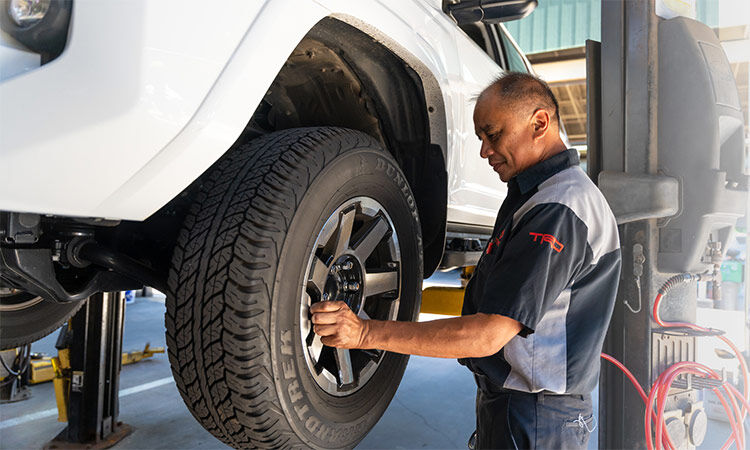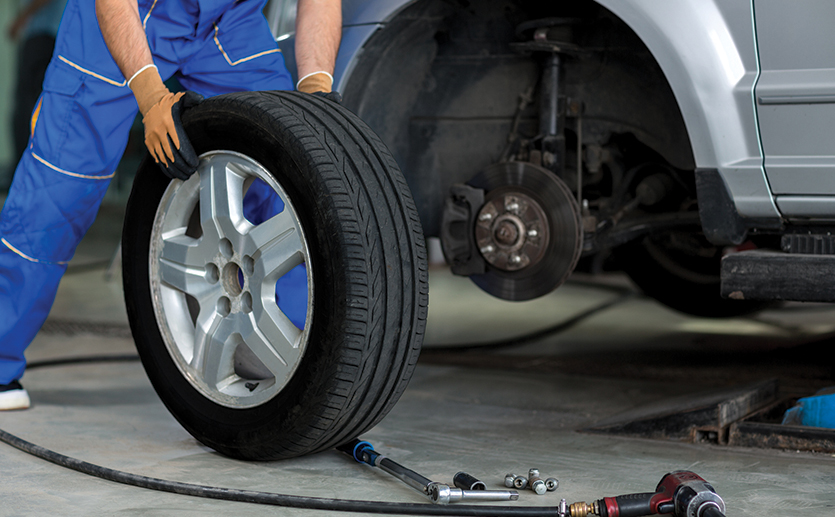Experience Precision with GMC Tire Service at Morris Tires
Experience Precision with GMC Tire Service at Morris Tires
Blog Article
Tire Solution: The Impact of Weather Problems
When it pertains to ensuring optimal performance and safety and security when driving, recognizing the impact of climate condition on tire service is essential. From scorching warmth to icy roads, each climate element can considerably influence tire capability and total driving experience. By delving right into the results of varying weather on tires, vehicle drivers can obtain important understandings that may enhance their lorry's efficiency and durability. In this conversation, we will check out the detailed partnership between weather and tire solution, shedding light on the relevance of weather-specific tire maintenance practices and factors to consider.
Heat and Tire Efficiency
When exposed to high temperature levels, tires experience changes in performance that can significantly influence vehicle safety and security and handling. The warm generated from prolonged driving or hot climate conditions triggers the tire rubber to soften, bring about decreased step life and enhanced wear. As the rubber ends up being softer, the tire's grip when traveling decreases, influencing braking distances and overall traction. In severe situations, too much heat can also create tire blowouts, posturing a serious security risk to the automobile and its occupants.

Winter Results
Cold climate conditions can have a significant impact on tire performance and safety and security. As temperatures decline, tire rubber can solidify, resulting in reduced grip on icy or snow-covered roadways. In winter, tires may likewise shed atmospheric pressure extra quickly, which can affect handling and gas effectiveness. Additionally, chilly temperatures can cause tire sidewalls to stiffen, raising the risk of damages from gaps or other roadway threats.
To minimize the impacts of winter on tires, it is essential to consistently check tire stress and inflate them to the manufacturer's advised levels. Making use of winter season or all-season tires developed for winter conditions can likewise improve traction and hold on icy or snowy roadways. Appropriate tire maintenance, including routine inspections for wear and damage, becomes a lot more important throughout colder months to make certain optimal performance and security.
Rainy Conditions Impact
During wet problems, tire efficiency and safety can be significantly affected by the damp road surface areas and lowered visibility. The walk pattern of tires plays an important duty in keeping grip on wet roadways. Tires with damaged footsteps are much more susceptible to hydroplaning, where a layer of water develops up between the tire and the road surface, causing loss of traction. To fight this, vehicle drivers must routinely check their tires for adequate step depth and consider spending in tires especially created for damp problems.
Additionally, wet weather can also lower exposure, making it challenging for drivers to see the road ahead clearly (GMC Tire Service). In such conditions, it is vital to readjust driving speeds as necessary and maintain a secure following range to enable sudden stops. Appropriately filled with air tires can also aid in maintaining control on wet roads by supplying better handling and grip
Snow and Tire Safety
Snow-covered roadways pose unique challenges for vehicle drivers, stressing the value of appropriate tire option and maintenance. When driving in snowy conditions, having the ideal tires can make a substantial distinction in security and efficiency. Wintertime tires are designed with unique rubber compounds and step patterns to provide far better traction on snow and ice contrasted to all-season tires. The much deeper footsteps and sipes of winter season tires help grasp the road much better, decreasing the risk of slipping and gliding.

It is crucial to comply with supplier guidelines when using and mounting tire chains to stop damages to the tires and car. By selecting the ideal tires, maintaining appropriate inflation, and considering extra grip help like tire chains, drivers can enhance their security when navigating snow-covered roads.
Weather-Related Tire Maintenance
When confronted with numerous weather problems, correct tire upkeep becomes an essential element of vehicle safety and security and efficiency. Weather-related tire maintenance incorporates a variety of methods intended at ensuring ideal tire feature and long life in various weather condition situations. One essential facet of weather-related tire upkeep is tire stress policy. Rising and fall temperatures can trigger tire stress to differ, affecting traction and fuel effectiveness. On a regular basis inspecting and adjusting tire pressure according to manufacturer referrals is important for safe driving in altering climate problems. Furthermore, tire walk depth plays a considerable role in taking care of various weather condition aspects. Tires with adequate step deepness offer far better grasp on damp or icy roads, decreasing the danger of hydroplaning or skidding. When step wear reaches a specific depth is essential for maintaining grip and stability in adverse weather condition, examining tire tread routinely and replacing tires. By focusing on weather-related tire maintenance, motorists can boost security, improve lorry efficiency, and lengthen the lifespan of their tires.
Conclusion
In conclusion, weather condition conditions have a significant effect on tire performance and safety. From warmth impacting tire stress and wear to cool climate minimizing grip, it is essential to take into consideration the weather when preserving and using tires.
In this discussion, we will certainly check out the intricate connection between weather condition conditions and tire service, dropping light on the importance of weather-specific tire maintenance techniques and considerations.

Report this page